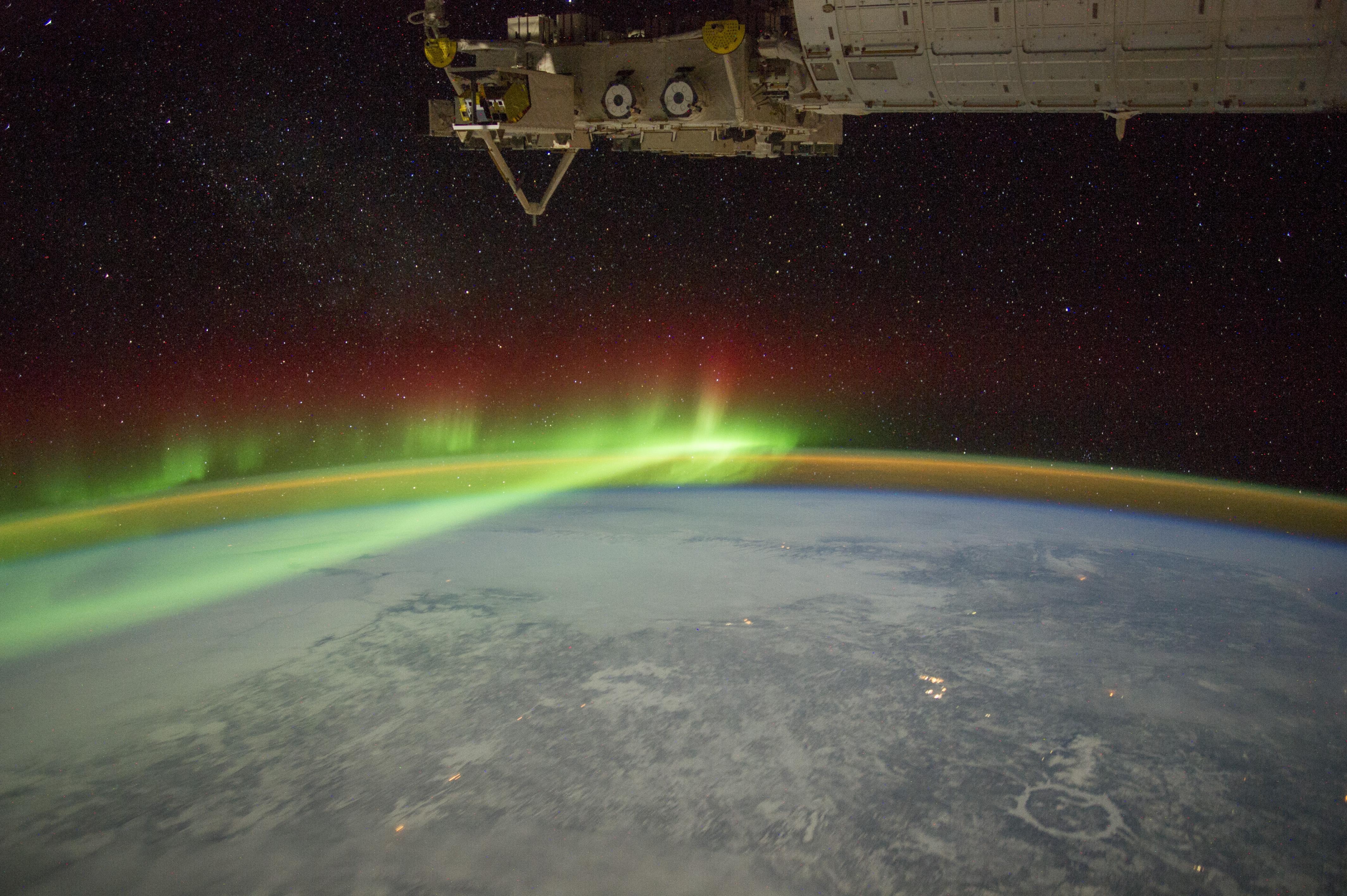Wow! Northern Lights Glow in Breathtaking Image from Space Station

The bright, ethereal lights of the auroras. The surface of Earth, pockmarked with impact craters. A faint glow emanating from the planet's upper atmosphere. All of these amazing sights were captured in a single nighttime photograph taken by an astronaut aboard the International Space Station.
The photo was originally taken in February 2012, and included a glimpse of the space station, but NASA's Earth Observatory recently released a cropped, labeled version of the stunning scene.
The striking tableau represents a view from the International Space Station as it flew over Quebec, Canada. The astronaut was able to capture the bright streaks of light from the auroras as the orbiting outpost passed overhead. [Aurora Photos: See Breathtaking Views of the Northern Lights]
The northern lights, or aurora borealis, are caused by the collision of charged particles with the Earth's atmosphere. When photographed from space, the natural light show — though still beautiful — is perhaps less overwhelming and more easily understood as an atmospheric phenomenon.
The photograph also shows a golden halo, known as airglow, around the rest of the planet. Airglow is another result of the interaction between the sun's radiation and Earth's atmosphere, according to NASA's Earth Observatory.
In addition to a wealth of natural sights, the photo shows the human footprint on the landscape. Artificial lights mark the locations of some northern settlements, including Labrador City and Goose Bay (both in Newfoundland and Labrador, Canada), which are labeled in the newly released image.
Wintry conditions also make some features of the Quebec landscape visible 237 miles (382 kilometers) below. The ring-shaped Manicouagan crater was created by an asteroid impact 214 million years ago, according to the Earth Observatory. The massive crater measures 37 miles (60 km) across, and its outline is clearly visible in the lower third of the photograph.
Get the world’s most fascinating discoveries delivered straight to your inbox.
Original article on Live Science.



